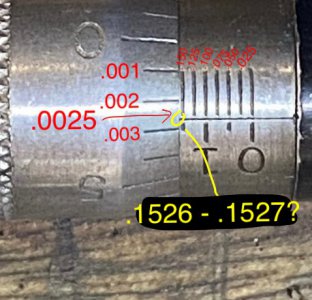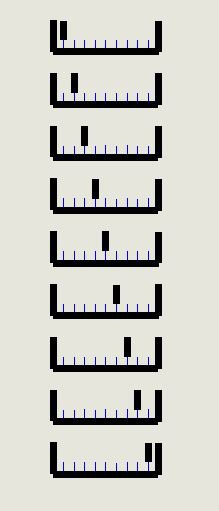- Joined
- Mar 21, 2018
- Messages
- 1,597
What you have is a mic that has a resolution of 0.001". The mics with the "lines" have a resolution of 0.0001". Your first photo shows 0.025", which is the resolution of the mic. With experienced readers, the extra digit of resolution can be guestimated to a very find detail, thus the 0.0253" reading.








